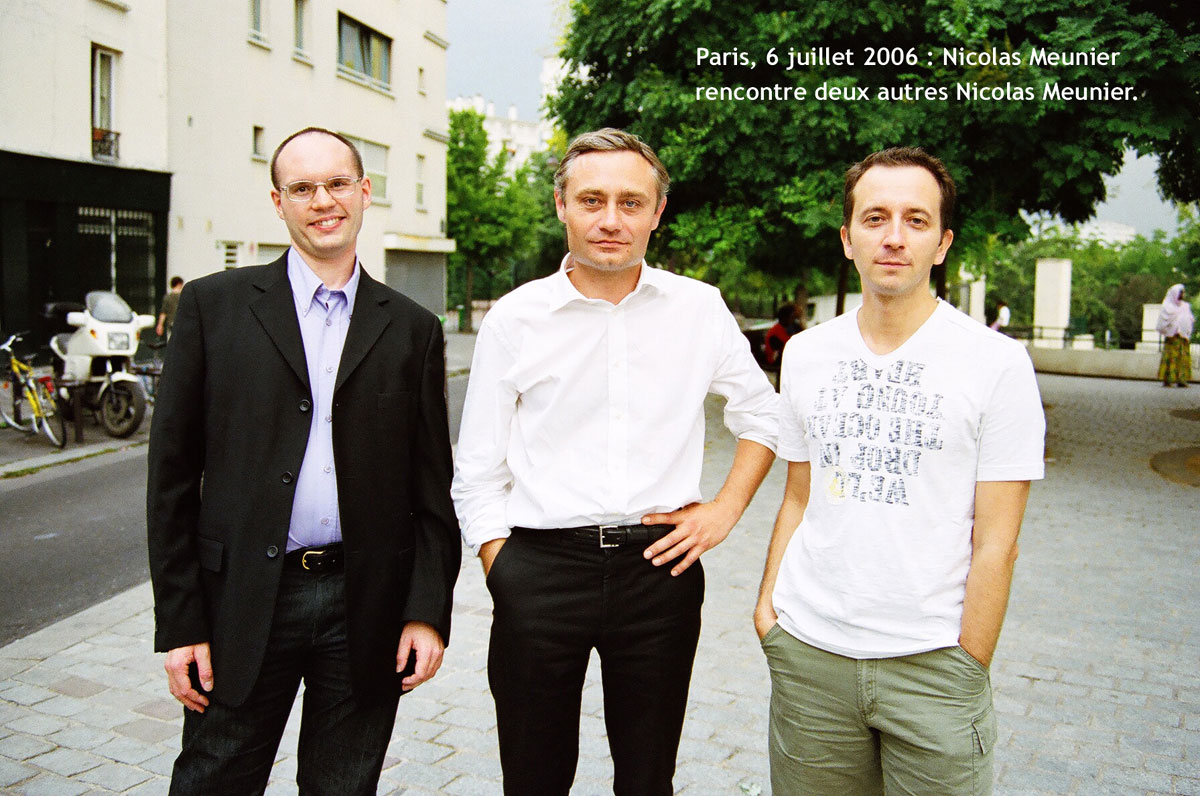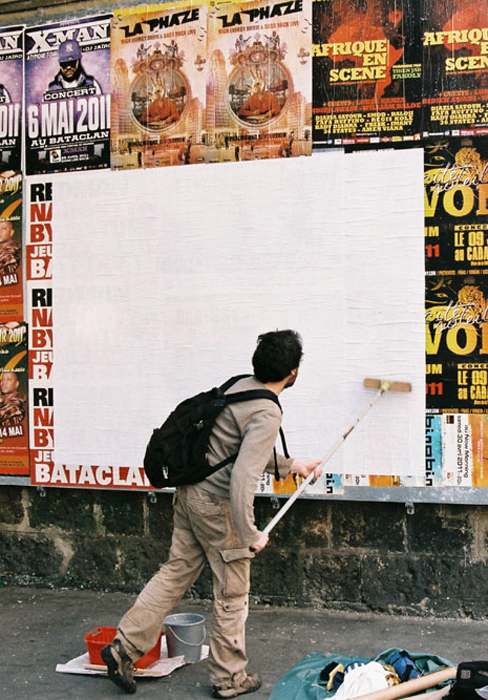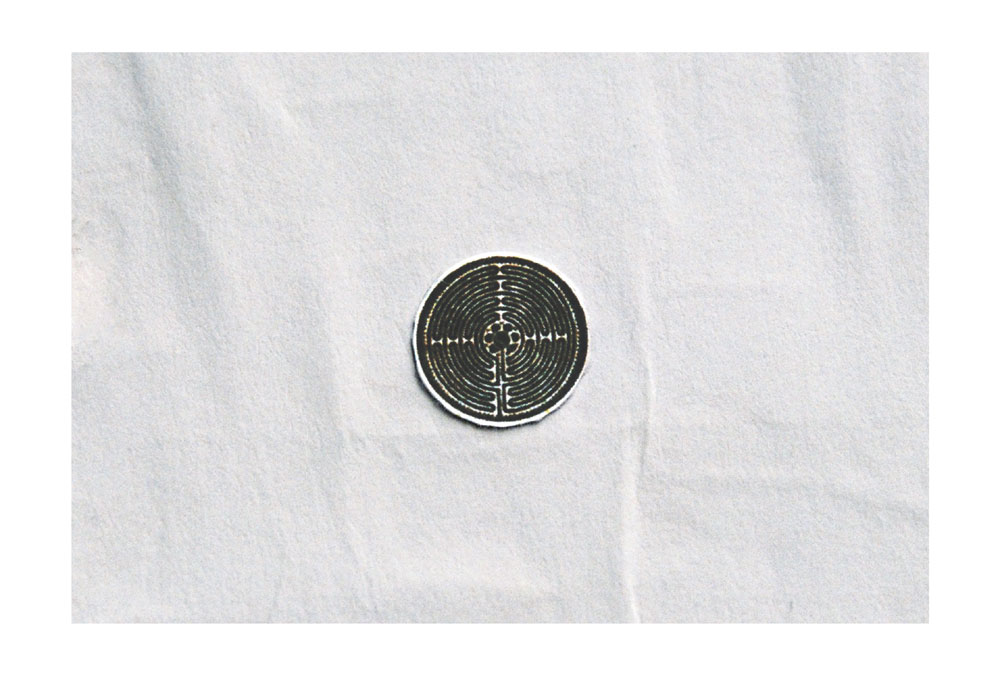
Letters to Julien, François and Martin
In October 1996, soon after I came to live in Paris, I opened a phonebook to find 3 Juliens living in the 13th arrondissement, 3 François living in the 11th and 3 Martins in the 19th. In a letter, I explained them my project: getting, from people I don't know, themes as a starting point for a photographic project. I chose these names and arrondissement because I liked them: the names sounded soft and I would have liked to live in these arrondissements (I would not make the same choices today). I didn't tell them that I only wrote to men (I wasn't against a romantic encounter).
I received three answers, one from each names.
Julien’s answer
Julien suggested “the anonymity of the man in the city – Paris is a good illustration of it”. But then, he forgot to tell me his family name so that I didn't know which of the Juliens it was.
I then had to send my answer to the 3 Juliens.
My answer to Julien
It took me over 5 years to continue this project. I quickly gave up photography and university as well; new projects motivated me more. But, 5 years later, none of the 3 Juliens still lived at the same address.
I then decided to send a postcard to all the Julien C., Ch. and D. in France. This postcard shows the 3 Nicolas Meuniers on the day they met. On the backside, one can read a summary of the project. To make it, I sent a letter to 3 homonyms living in Paris (10 Hélène Lamberts, 9 Nicolas Meuniers and 10 Catherine Rousseaus). And since 3 Nicolas Meuniers accepted my proposition, they were my answer to Julien. I hope that the “right Julien” was among the 46 postcards sent.
Thanks again to the Nicolas Meuniers.

Martin’s answer
Martin T. gave me his theme the evening we met at the Wepler brasserie, place de Clichy. He was, and may still be, a psychoanalyst. This may explain the theme he chose: iolence in the family”. He wasn't the lover I was looking for, he was too old for me and a bit too flirtatious.
My answer to Martin
While I was trying to represent a symbolic scene that would be entitled : “Violence in the family”, “le jeu de la “mourre” ” (the game of Morra), that I just discovered, put me on the way of other hand games, like “hand-paper-scissors”. I added the well (that actually twists the equilibrium of the winning combinations) and I drew the scene with 4 characters. I made a painting from it. But I preferred keeping the drawing. I sent the photograph of the black and white sketch on a white background, on a 50x75cm format, to Martin T. Now, I prefer its negative version.
Martin T. invited me to his place when he received the image. We first met five years before. He hung the “poster” on his waiting room wall. He told me he reached a point where he didn't know what to put on this wall. He thought it was a good idea to make his patient think. I don't know if it's a good idea.


François’ answer
François S. found a way to put his answer himself in my mailbox. He wrote me on a nice piece of paper, with a beautiful writing and I thought that he didn't feel concerned by the examples I suggested, and that he actually found to be far from my goals.
I sent another letter to François S that I didn't have any goal and to ask him if he was declining my invitation. He answered: “Non point. Alors, prenons le point”. ( *a play on words with the word “point” which can be translated as “Not at all. Let's take the dot”.). He sent me with his beautifully calligraphed letter on a note of Monte Carlo's “Hôtel de Paris”, a Polaroid picture of his note lit by a sun ray. But who was this François S.?!
I met him at his place in 2002, when after 5 years I wanted to know if my three “men” were still reachable. I don't remember if I went to ring his doorbell without notice, or he if invited me at his place. I know that I drank a glass of milk and that he gave me one of his books. I had just met François Simon, the famous food-critic.
My answer to François
I handed him my answer much later, in May 2011, in a bar in Saint-Germain.
Put in translucent paper, I gave him the picture of the dot, printed on thick paper along with a booklet. In it, through several pictures, we understand that this black dot at the centre of this wrinkled paper is actually the negative image of a labyrinth (the one in Chartres). A small circle glued on a 3 by 4 meters white board, itself glued on an even larger billboard.
I had wished for his full “stop”. It then was.

The dot











